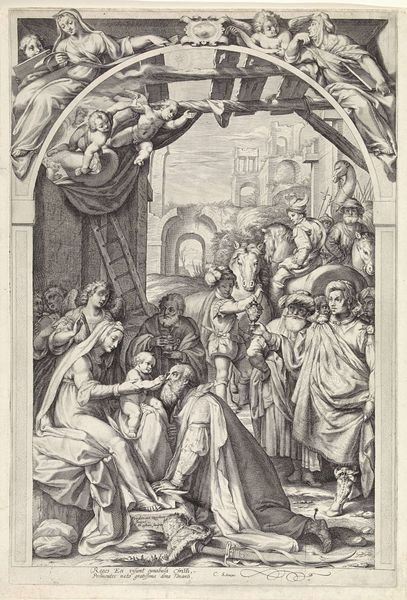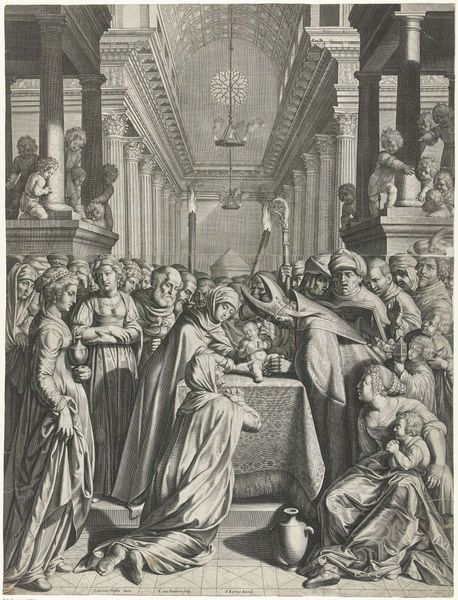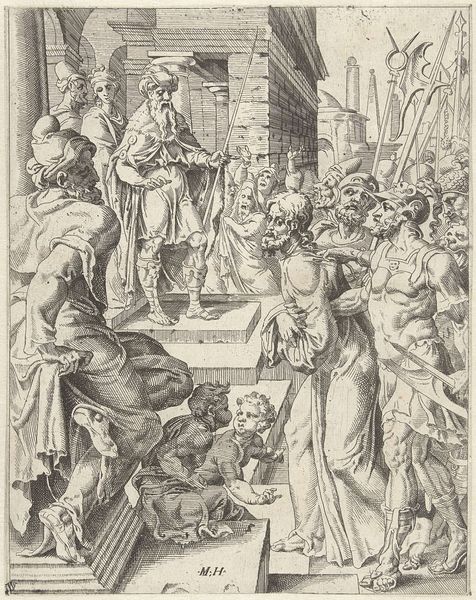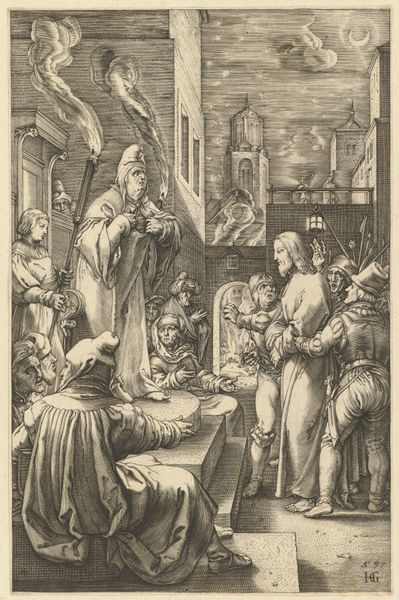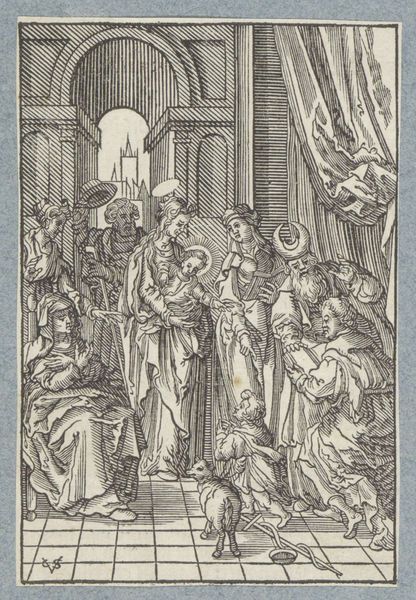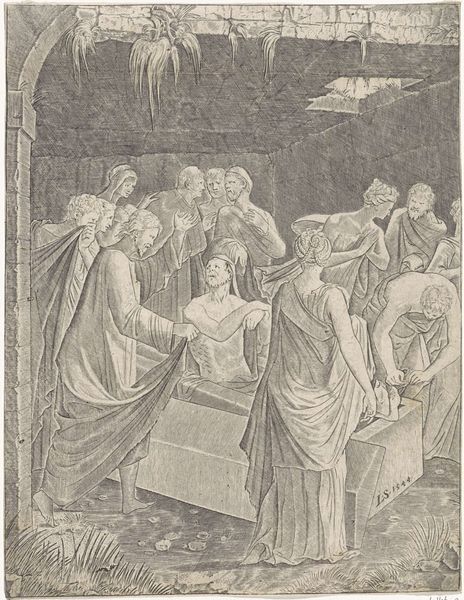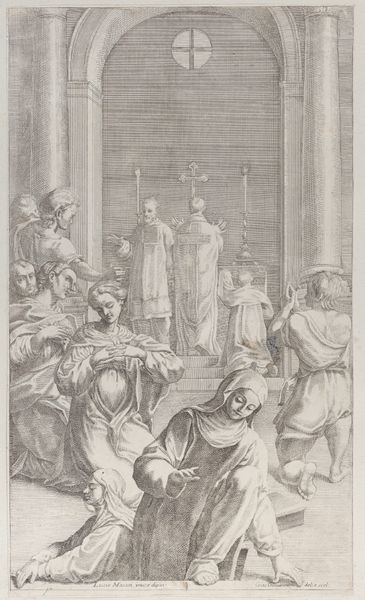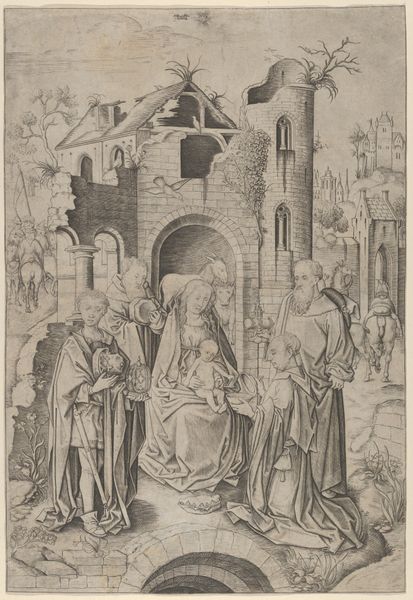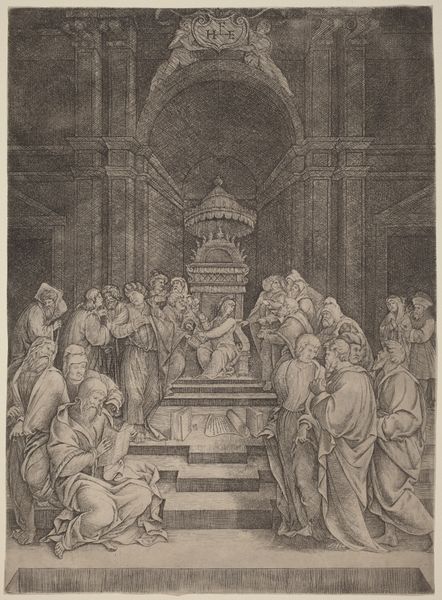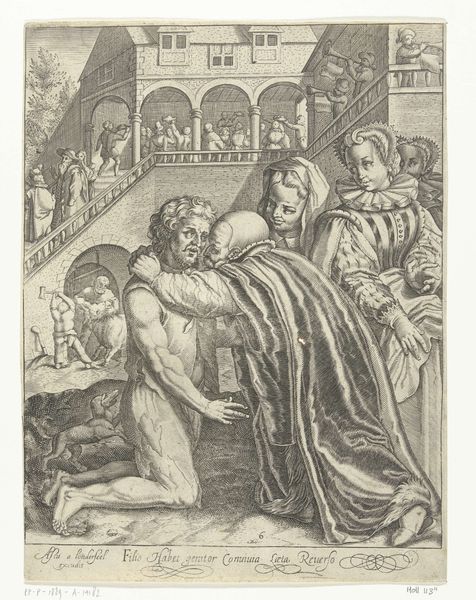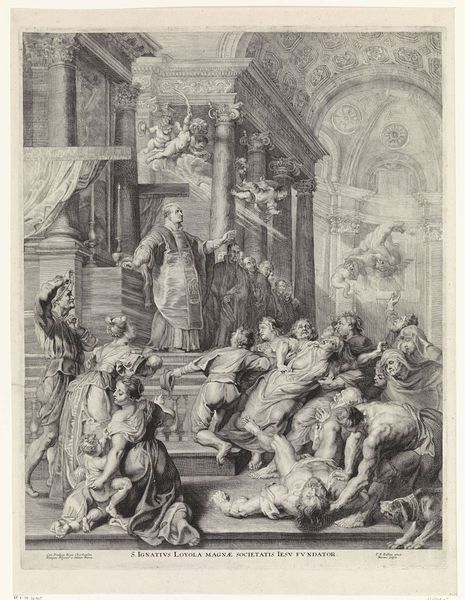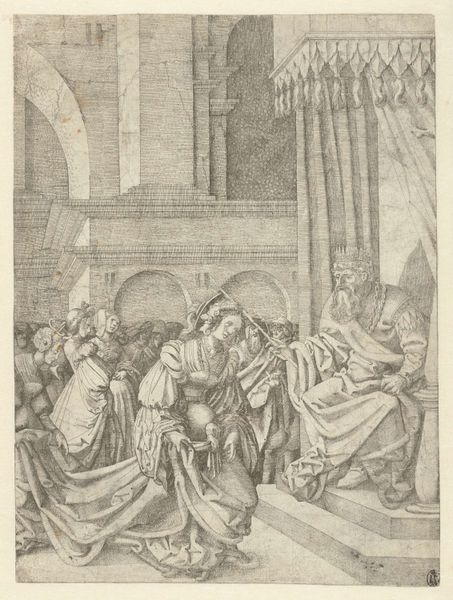
print, engraving
#
narrative-art
#
baroque
# print
#
old engraving style
#
perspective
#
figuration
#
line
#
cityscape
#
history-painting
#
engraving
Dimensions: width 441 mm, height 562 mm
Copyright: Rijks Museum: Open Domain
Editor: This is Nicolaes de Bruyn’s "Wonder van de heilige Jakobus," from 1600. It’s a print, and quite detailed! It's monochrome but I notice how effectively line quality renders depth, like how a dense assembly is framed within this grand arcade, but how should we interpret the scene itself? Curator: What do you see here, if you focus less on the surface? Think about the interplay between the earthly and the divine, expressed through symbolic gestures. What emotions do those elicit from you? Editor: There’s a central figure, seemingly ill or deceased, surrounded by onlookers. Some look worried, others hopeful? A saint is being invoked. The whole image feels theatrical; it is carefully staged, designed to draw attention to a transformative moment of the intervention, not just in that setting, but within the viewer. What could that rosary mean? Curator: The rosary grounds us in a physical reality that acknowledges pain and devotion, juxtaposed against a staged backdrop of Roman imperial power, almost as if sanctified by heavenly intercession. What cultural echoes do you feel resonating here? Does it feel purely religious, or does it blend other traditions? Editor: It is reminiscent of many classic paintings by great European masters, so I suppose one tradition echoes another and so on. The integration of faith and established power through those arches…it really captures that Baroque drama. I wouldn’t have immediately recognized how that set design underscores that. Thank you! Curator: My pleasure. It is easy to see symbols of power as only reflecting religious power but how each interacts, or subverts those symbols, holds multiple truths. Reflect on those dualities.
Comments
No comments
Be the first to comment and join the conversation on the ultimate creative platform.

